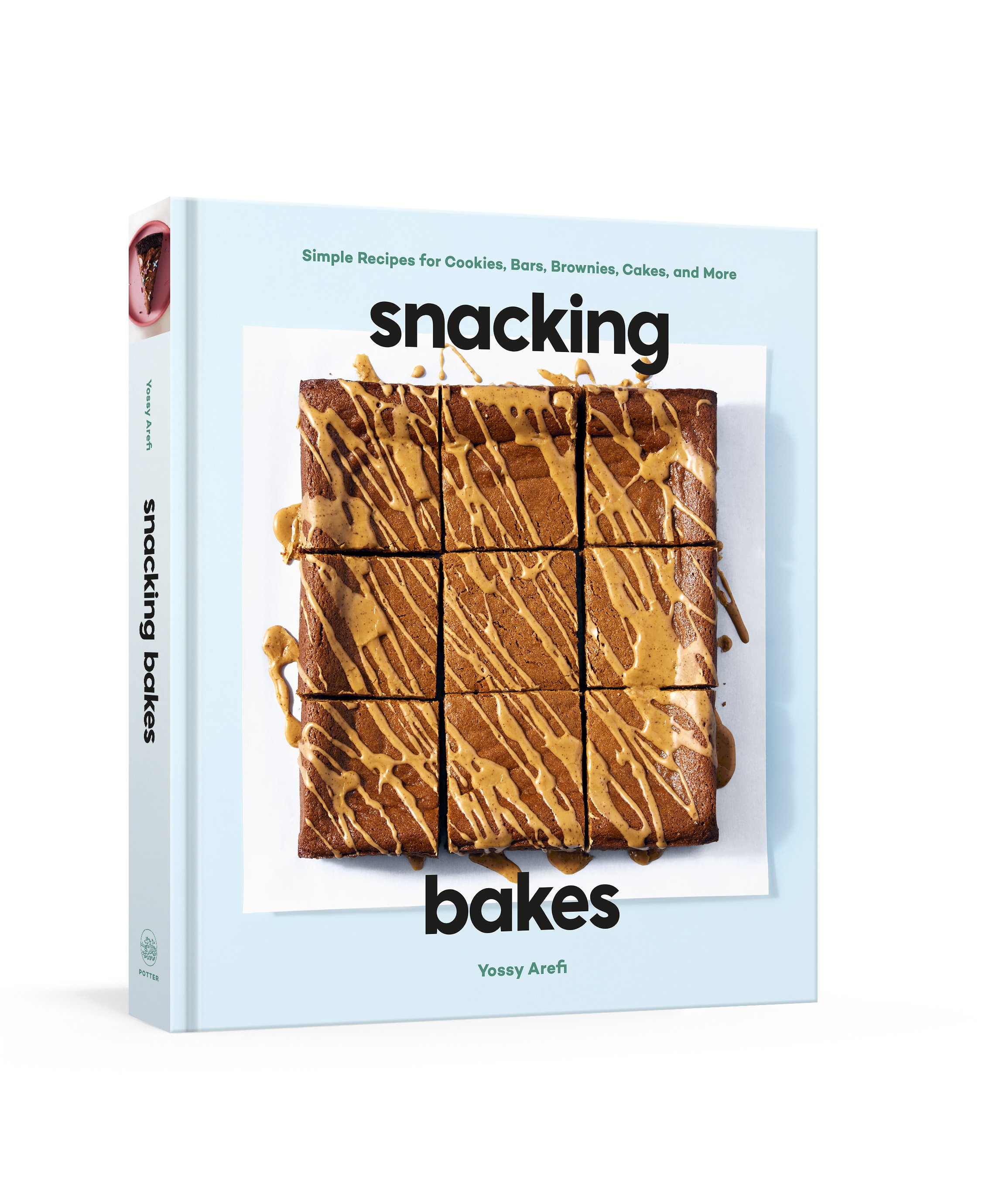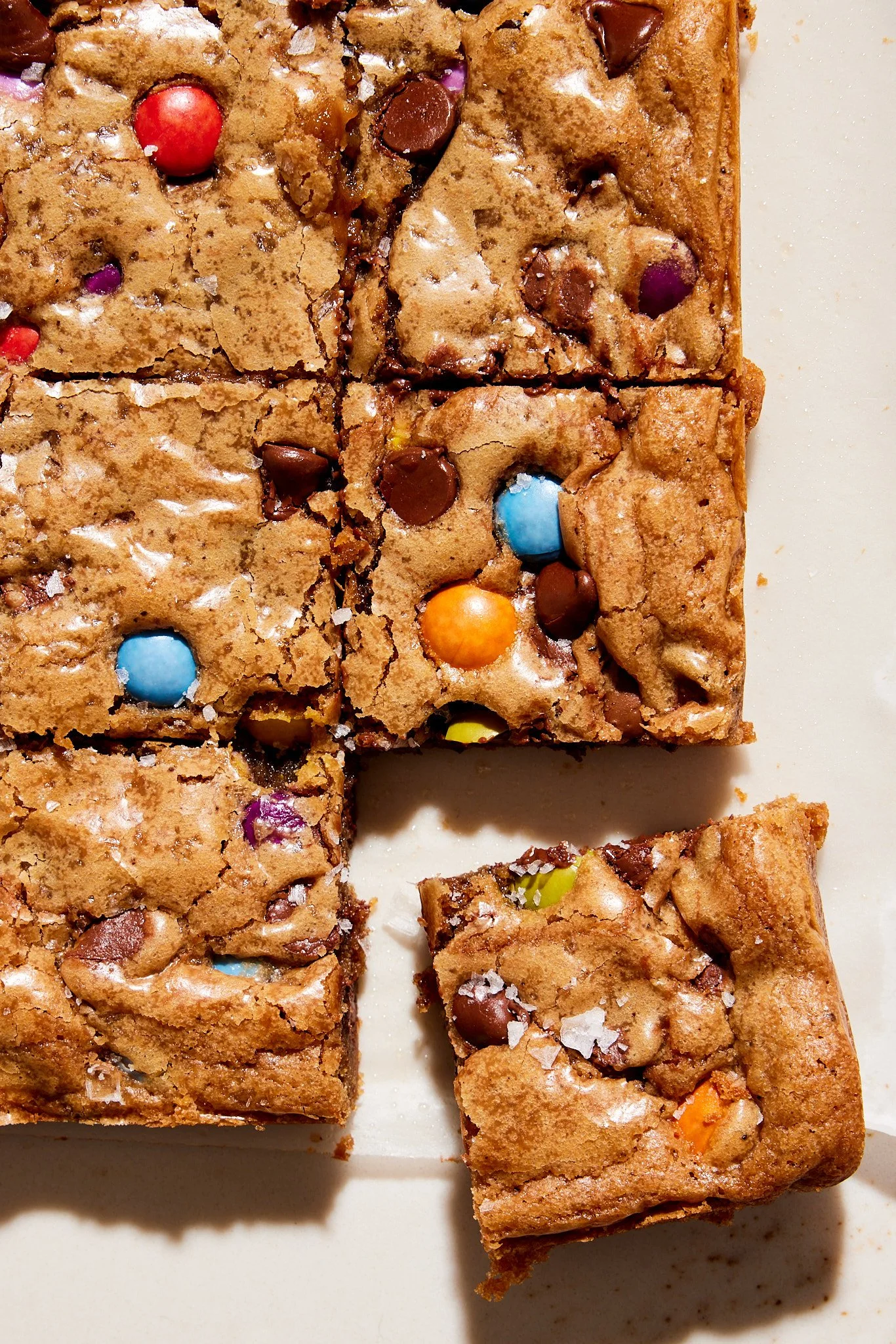'Coffee' Coffee Cake from One Tin Bakes
/This recipe for “Coffee” Coffee Cake is from Edd Kimber’s wonderful new book One Tin Bakes which features 70 recipes that you can make in a 9x13 pan. It’s such a smart idea and Edd truly covered every possible type of bake in this book. There are so many incredible recipes that it was tough to pick just one, but this cake has everything - toasty crispy streusel, coffee and cinnamon filling, and a moist tender sour cream cake. It comes together pretty quickly too, which is my favorite kind of bake.
This is the sort of cake that I can’t stop eating all day, in fact, I ate it for two meals the day I made it! It’s so homey and comforting with just enough coffee and spice to make me keep coming back for more, and the toasty, nutty brown butter in the streusel is an A+ move!
Edd very kindly gave measurements in imperial and metrics, but do yourself a favor and just use a scale it’s so much easier, especially for this type of book that was written in metrics and converted. I hope you all pick up a copy of this book from your favorite Indie Bookstore, they need us more than ever - check out IndieBound.com and Bookshop.org for your local shopping options.
“Coffee” Coffee Cake
from One Tin Bakes by Edd Kimber
serves 12-15
For the Brown Butter Streusel
125g (4 ½ oz/1 stick + 1 tablespoon) unsalted butter, plus extra for greasing
160g (5 ¾ oz/1 ¼ cups) plain (all purpose) flour
115g (4oz/ ½ cup + 1 heaped tablespoon) caster (superfine) sugar
½ teaspoon fine sea salt
For the Espresso Swirl
100g (3.oz/⅓ cup + 2 tablespoons) light brown sugar
3 teaspoons instant espresso powder
2 teaspoons ground cinnamon
For the Sour Cream Cake
175g (6oz/1 ½ sticks + 1 teaspoon) unsalted butter, at room temperature
300g (10 ½oz/1 ½ cups) caster (superfine) sugar
315g (11oz/2 ½ cups) plain (all-purpose) flour
1 tablespoon baking powder
1 teaspoon fine sea salt
1 teaspoon vanilla extract
3 large eggs
180ml (6 ¼ fl oz/ ¾ cup) sour cream
Preheat the oven to 180°C (350°F), Gas Mark 4. Lightly grease the baking tin and line with a piece of parchment paper that overhangs the two long sides of the tin and secure in place with metal clips.
Start by making the streusel as it needs to chill a little before baking. Mix the flour, sugar and salt together in a bowl. Melt the butter in a small saucepan over a medium heat, stirring frequently. The butter will melt, sizzle and splatter and then start to foam. As it foams, little golden brown flecks will start to appear. Before these flecks burn, remove the pan from the heat and pour the butter over the dry ingredients, using a fork to stir until it all clumps together. You’re looking for a mix of fine crumbs and big chunks. Pop the bowl into the freezer.
Next, make the espresso swirl. Mix together the sugar, espresso powder and cinnamon in a small bowl and set aside.
For the cake, place the butter and sugar into the bowl of an electric stand mixer fitted with the paddle attachment and mix on medium speed for 5 minutes, or until light and fluffy.
Meanwhile, mix together the flour, baking powder and salt in a separate bowl. Add the vanilla to the butter mixture and mix briefly to combine. Add the eggs, one at a time, beating until fully combined before adding another. Add the flour mixture in three batches, alternating with the sour cream, starting and finishing with the flour.
Spoon two-thirds of the cake batter into the prepared tin spreading into an even layer. Sprinkle over the espresso swirl then dot small spoonfuls of the remaining batter all over the top, covering as much of the swirl mixture as possible before gently spreading so that all of the swirl mixture is covered. Sprinkle over the streusel in an even layer.
Bake for 45–50 minutes or until a skewer inserted into the middle of the cake comes out clean. Leave to cool in the tin for about 15–20 minutes, before using the parchment paper to gently lift it out on to a wire rack to cool completely. Once cool, cut into portions and serve.
Store in a sealed container for 2–3 days.

































